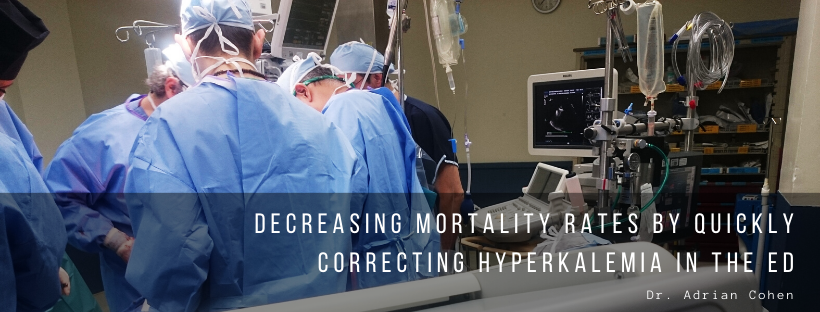When an individual’s potassium levels are above 5.5 mEq/L, they may be diagnosed with hyperkalemia. The symptoms of hyperkalemia are often absent or go undetected, even in the emergency department (ED), but leaving this condition untreated can result in serious complications or death. Recent studies suggest that moving quickly to treat hyperkalemia in the ED could result in lower mortality rates.
Causes & Effects
Hyperkalemia is found at higher rates in individuals with conditions such as heart failure, diabetes, and renal disease, and certain medications like renin-angiotensin-aldosterone inhibitors can also increase the chances of developing hyperkalemia. Additionally, some treatments that are used to remedy the conditions listed above can also increase potassium levels, making it imperative that diagnosis and treatment of hyperkalemia in the ED are prompt.
Having potassium levels above 5.0-5.5 mEq/L can be detrimental and life-threatening. At a level of 7.0 mEq/L, an individual may suffer consequences related to blood flow or the nervous system. Beyond a level of 8.5 mEq/L, an individual could experience cardiac arrest or respiratory paralysis. Regardless of the degree of excess, hyperkalemia should be treated promptly.
Treatment
In cases where an individual’s potassium levels are above 7.0 mEq/L, it is advised that treatment should begin prior to any initiatives to determine the exact cause. While aggressive treatment is most effective, the degree of treatment is determined based on factors such as how quickly hyperkalemia develops and whether there is evidence of toxicity. There are several different kinds of treatment available, including the administration of calcium and insulin, but the most effective treatment is dialysis.
Reducing Mortality Rates
A study published this past December in The American Journal of Emergency Medicine suggests that treating hyperkalemia with more efficacy can reduce mortality rates in the ED. The study looked at 114,977 ED patient records and reported that patients with high levels of potassium in the blood had a higher mortality rate than those with normal levels. Additionally, patients whose potassium levels normalized experienced lower mortality rates than patients who had consistently high or rising potassium levels.
Though the conclusions of this study are subject to further research, medical professionals in the ED should aim to rapidly treat hyperkalemia in patients in the ED to minimize the potential for health complications and reduce mortality rates.

